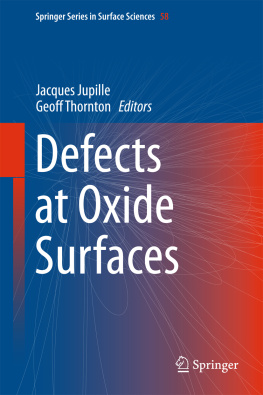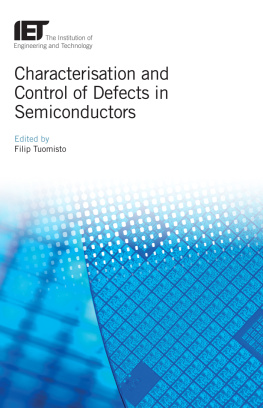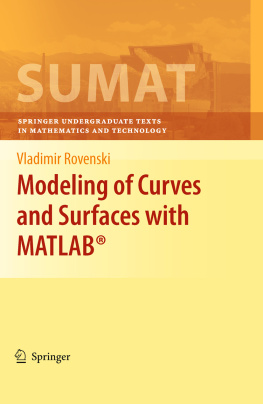1. Numerical Simulations of Defective Structures: The Nature of Oxygen Vacancy in Non-reducible (MgO, SiO2, ZrO2) and Reducible (TiO2, NiO, WO3) Oxides
1.1 Introduction: The Role of Defects in Oxide Materials
The functioning of several advanced devices is largely related to the presence of faults or defects in the structure of the material used for their construction []. Material and surface properties are strongly dependent on the nature, concentration, and arrangement of defects of various dimensionality like pores, voids, grain boundaries, dislocations, impurities, and missing atoms (vacancies). One of the fields where the nature of defects has been used to produce new functionalities is microelectronics, in which the properties of Si and the IIIV (e.g. GaAs) semiconductors and their use in practical devices depend on the control of dopants, interface states, etc. Regarding mechanical properties , the strength of a metal is largely related to the presence of dislocations; if one considers optical properties , the color of a gem is due to the presence of very small amounts of transition metal atom impurities embedded in an oxide matrix. In connection with transport properties , the superconducting behavior of some cuprates is closely connected to the level of oxygen vacancies. Given their refractory nature, oxides are often used at elevated temperatures and are exposed to strongly oxidising or reducing atmospheres, with consequent exchange of matter with the gas-phase and intrinsic generation of defects. In chemistry and heterogeneous catalysis , surface defects are extremely important as they largely determine corrosion resistance, molecular adsorption, and conversion of one chemical species into another.
The study of the chemical, electrical and optical properties of defects in oxide materials plays an crucial role in material science, solid state chemistry and solid state physics. Defects play a dominant role also in surface and interface properties, and in nanotechnology. The control of the amount, nature and characteristics of defects in solids is at the basis of defect engineering, a discipline aimed at using defects in a beneficial way to tune material properties in a desired manner or to generate new material behaviors (see also Chap. ].
The increase in interest in the control of defects in materials has grown in parallel with the development of new theoretical method s, algorithms and protocols to simulate and predict material and surface properties. This, together with the exponential growth of computing power, has made the computer simulation of defects in bulk materials and their surfaces an essential tool to complement and reinforce the experimental information. Still, the description of defects at oxide surfaces is not yet fully satisfactory. While some oxides (e.g. MgO, SiO2, TiO2, CeO2) have been studied in detail, and the level of understanding of their bulk and surface defectivity can be considered good, other oxides are much less understood. This is the case in particular for complex transition metal oxides, for ternary compounds, for oxide nanostructures (nanoparticles, thin films), etc.
In this chapter we are interested in some general features of defects in oxide materials (both bulk and surface) and in the problems related to their description with modern electronic structure theory, in particular descriptions based on the density functional theory (DFT) formalism. To illustrate these problems, take the determination of reaction energies from first principles calculations []. The cost of forming the oxygen vacancy by removing the oxygen atom from the surface is a key parameter that determines both the kinetics and the thermodynamics of the reaction. Contrary to what one could expect, this quantity is rather difficult to determine accurately, as its value greatly depends on the details of the calculations, on the specific exchange-correlation functional used, on the description of the defect center formed (localised or delocalised nature of trapped electrons), etc. Since uncertainties of a few kcal/mole in an energy barrier translate into kinetic constants that differ by orders of magnitude, it is clear that the development of accurate methods for the determination of defects formation energies is highly desirable yet not easily attainable.
On the other hand, theory can be extremely useful in predicting trends. Given the role that oxygen release from an oxide surface has on surface chemistry and catalysis, several attempts have been made to modify the cost of oxygen removal from an oxide by doping the material with heteroatoms []. The replacement of a metal cation in an oxide of MxOy formula with another dopant X opens several possibilities to selectively modify the electronic structure of the oxide. If the doping heteroatom X has the same valency of the metal cation M, the changes are mostly related to the different size of the two cations and to the different strengths of the M-O and X-O bonds. However, if the X element has a different number of valence electrons several possibilities exist to compensate the charge. This opens a complex scenario of defects that can more easily form and appear in the material, also as a function of the preparation conditions.
A reaction that for a long time has been considered a typical example of catalysts based on metal doping of oxides is the coupling of methane, CH4, to give ethane, C2H6, and other C2 hydrocarbons by Li-doped MgO []. This example shows in a very clear way how difficult it is to identify and characterize defects in oxides. The difficulty is mainly related to the very low concentrations, sometimes sub-part-per-million level, of the defects. This requires the use of very sensitive experimental techniques, and often the combination of more than a single technique.
First principles simulations can be of great help for the identification of potentially beneficial or detrimental dopants and for the design of new catalytic materials. DFT , in one of its several versions, is presently the most popular approach to determine the electronic structure and properties of materials. DFT has almost completely replaced more classical solutions to solve the Schrdinger equation based on the determination of the wave function of the system. These are the so called wave-function based methods, like the Hartree-Fock (HF) and the post-HF approaches where correlation effects are included with specific, often computationally very demanding, procedures. Still these methods play a very important role, for instance in the determination of optical excitations in solids []. Improvements in the formulation of exchange-correlation functionals used in DFT are continuously appearing in the literature, but still there are open questions about the reliability of DFT to study some special material properties. Particularly challenging is the determination of the electronic structure of transition metal oxides and other highly correlated systems. Not surprisingly, similar kinds of problems arise when one deals with the description of bulk and surface defects in oxides.












